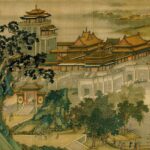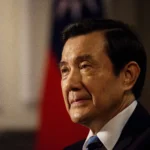Taiwan: three formulas and two options against the status quo
XULIO RIOS
The Taiwanese presidential and legislative elections are about to fall: January 13. Its interest comes from the double dilemma that must be elucidated. On the one hand, whether or not the policies of the sovereigntist Minjindang or PDP (Democratic Progressive Party) continue; on the other hand, whether the gap in cross-strait relations can deepen even further or, on the contrary, take a less disturbing direction.
Taiwan has held seven presidential elections since the first direct elections in 1996, during which the nationalist KMT (Kuomintang) and the PDP took turns as ruling party for two consecutive terms. The challenge for the PDP is to break this trend. According to surveys, more than 60 percent of the population demands change, but the PDP has serious options for continuity, despite the wear and tear, due to the division of the opposition, which failed in its attempt to formalize a unity candidacy between the two main forces, the KMT and the PPT (Taiwan People's Party), founded in 2019. Whether in local or presidential elections, this fragmentation has resulted in the victory of the third party in the past.
In cross-Strait relations, the PDP rejects the “one country, two systems” principle and the “one China” principle. The outgoing Tsai Ing-wen has stuck to defending the status quo by pursuing a policy based on de facto separation. The US has supported its orientation by increasing its support in economic, commercial, strategic and political terms. President Biden himself has facilitated 15 US arms sales to Taiwan and the signing of a bilateral trade agreement. In contrast, since 2016, Beijing-Taipei paraofficial communication has been suspended.
On the contrary, the opposition, whether in its KMT or PPT format, is in favor of dialogue with mainland China and has the capacity and will to implement it in order to avert the risk that current tensions lead to a war crisis that opens a third front of global instability (after Ukraine and the Middle East).
The PDP ticket (Lai Ching-te and Hsiao Bi-khim) is clearly pro-American; that of the KMT (Hou You-ih and Jaw Shaw-kong) and that of the PPT (Ko Wen-je and Cynthia Wu) seek balance in the triangular relationship with the US and mainland China, also with Japan.
Most polls point to Lai as the favorite, followed closely and in an upward trend by Hou. Ko is further behind. What could facilitate the opposition's victory in the presidential elections is a last gesture by Ko, but it seems unlikely. The defeat of the PDP in the legislative elections is clearer, favored by the significant electoral rise of the opposition in the local elections of November 2022, in which the KMT swept. If verified, this would have, in the worst case, a certain capacity to block presidential action.
The erosion of the status quo
The status quo in the Taiwan Strait is defined by the existence of two differentiated political systems on either side, whose immediate origin we must refer to the civil war. The People's Republic of China is a state in fact and in law, while the Republic of China (Taiwan), continuation of the old regime defeated by the CCP on the continent, is a state in fact but not in law, barely recognized by a dozen of states around the world.
Xi Jinping, who has outlined a plan to complete China's modernization in 2049, has reiterated, like other leaders who have preceded him, that this would be incomplete if it is not complemented by reunification in parallel. After Hong Kong and Macau, the Taiwan issue is the most delicate. It is not just an economic issue (chips) or a strategic issue (maritime route) but rather closing the cycle of two centuries of decline that made possible the handover of the island to Tokyo (Treaty of Shimonoseki that put an end to the first Sino-Japanese War in 1895). When Xi points out that the issue “cannot be left from generation to generation” or that unification is “inevitable,” he indicates that it is a central interest and that regardless of the cost, “it will be done.”
The problem is that, today, according to polls, a very large majority of Taiwanese reject the formula proposed by Beijing to carry out unification. And in the new generations the distance grows. Even those, like the KMT, who campaign in favor of unification, disagree with the CCP's approach. Vice-presidential candidate Jaw Shau-kong recalled this on the campaign trail: he would not talk to China about unification if he were elected, given “the substantial differences in [political] institutions between the two sides.” They remain as deeply nationalist as they are anti-communist.
A PDP victory would distance Taiwan further from the mainland and could give encouragement to those who see no other option to avoid it than the exponential increase in pressure of all kinds, including military pressure. The fear of the acceleration of cultural desinization on the island, together with the policies of investment withdrawal from the continent as an effect of the persistent commercial and technological war between Beijing and Washington, complicates the panorama, weakening the ties woven in the last 40 years. On the contrary, a KMT victory could open a scenario similar to that experienced during Ma Ying-jeou's mandate (2008-2016), which accelerated de facto unification through trade and political agreements.
The combination of a sovereign victory on the island with that of Donald Trump in the US elections next November could increase the possibilities of crisis. Washington would also have more ability to poke China in the eye over the Taiwan issue. All of this explains why the question of war and peace is one of the main axes of debate in the electoral campaign. It is not a trivial topic.
At the San Francisco summit in November, Xi clarified to Biden that nothing has been decided in Zhonnanghai regarding military action by the PLA, neither in 2027 nor in 2035. This was relevant as a denial of the forecast of many US strategists and military personnel who They suggest the next ten years as the most dangerous decade in this regard. The Chinese preference is peaceful reunification. But a victory for Lai Ching-te – with a probable repetition in 2028 – could make it impossible in the short term. Or maybe more.
In one sense or another, these elections can determine the preferred management model of the countdown to ending a status quo with an expiration date.
Xulio Ríos He is an emeritus advisor to Chinese Policy Observatory.













